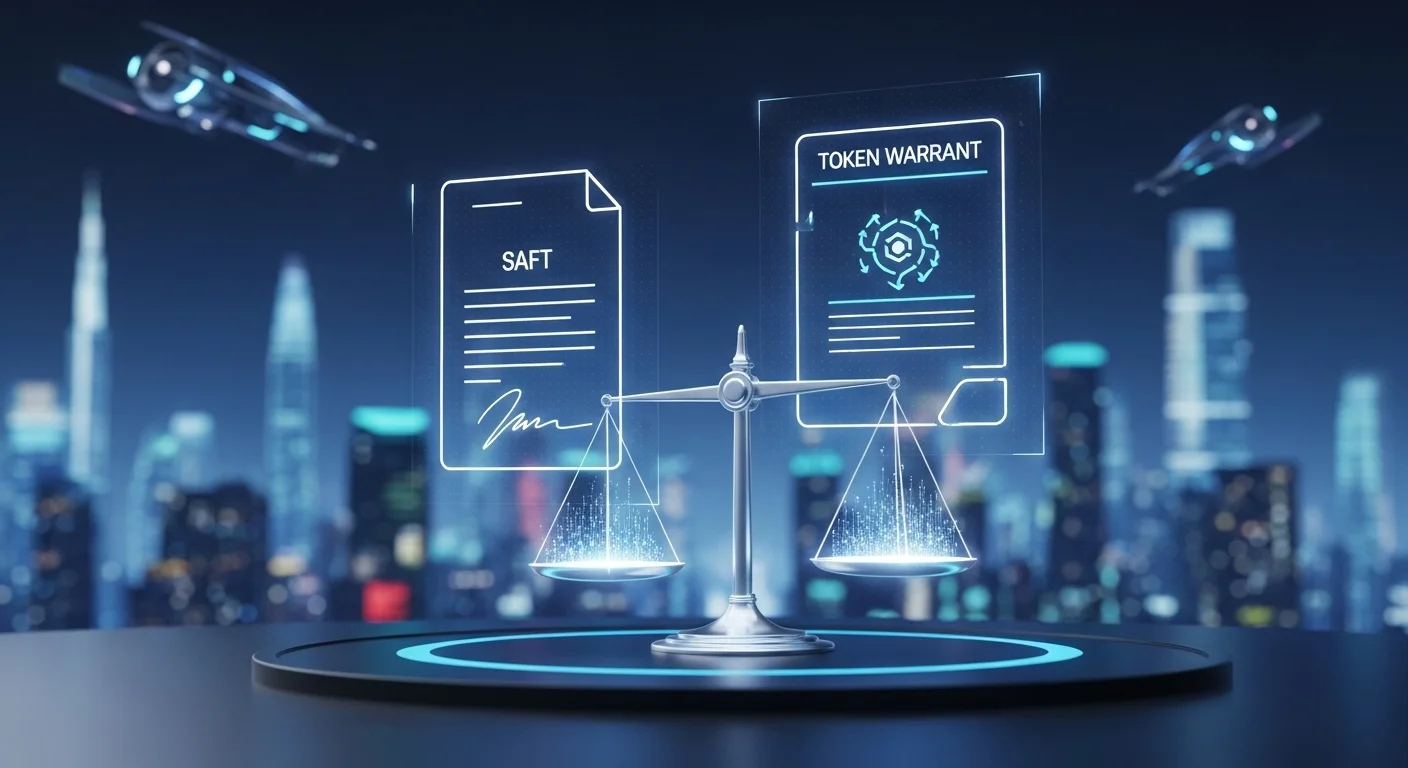In the dynamic world of Web3 and cryptocurrency, raising seed funding requires more than just an innovative idea; it demands the right legal toolkit. Traditional equity isn’t always a suitable fit for projects whose primary value lies in a future decentralized protocol and its native token. Against this backdrop, two popular instruments have emerged: the SAFT (Simple Agreement for Future Tokens) and the Token Warrant.
The choice between them is not merely a technicality. It is a strategic decision that defines the deal structure, risk allocation, and the long-term relationship between the project and its investors. As an international law firm, we guide our clients through these complexities. In this article, we analyze the SAFT and the Token Warrant to help you make an informed choice.
What is a SAFT (Simple Agreement for Future Tokens)?
A SAFT is an investment contract through which an investor provides capital to an early-stage project in exchange for the right to receive a certain number of tokens in the future, upon the network’s launch.
The venture capital analogy: A SAFT is the crypto-equivalent of a SAFE (Simple Agreement for Future Equity). Just as a SAFE grants the right to future equity, a SAFT grants the right to future tokens.
Key Characteristics of a SAFT:
- Legal Nature: In most jurisdictions, including the U.S. (under the Howey Test), the SAFT itself is considered a security (an investment contract). The project and its investors are betting that the future token, once issued and functional, will be classified as a utility token, not a security.
- Structure: It is a standalone document. The investor purchases only the right to future tokens, without receiving any equity in the development company.
- Target Audience: Ideal for crypto-native funds and investors interested exclusively in the project’s tokenomics, not in the equity of the legal entity.
- Simplicity and Speed: A SAFT is relatively straightforward to draft, allowing for rapid round closures.
Key Risks of a SAFT:
- Regulatory Uncertainty: The primary risk is that regulators (such as the SEC in the United States) may not agree with the classification of the future token as a utility. If the token is deemed a security, its issuance and trading will be subject to complex securities laws.
- Misalignment of Interests: SAFT investors may be incentivized to seek quick profits after the Token Generation Event (TGE), creating selling pressure on the token’s price, which may not align with the company’s long-term goals.
What is a Token Warrant?
A Token Warrant (also known as a Token Side Letter) is not a standalone instrument but an addendum to a traditional equity financing round (e.g., a SAFE or priced equity round).
How It Works: An investor puts money into the company in exchange for an equity stake (or the right to one via a SAFE) and, in addition, receives a warrant—the right to purchase a certain number of the project’s future tokens at a predetermined price or discount.
Key Characteristics of a Token Warrant:
- Dual Nature of the Investment: The investor gains exposure to the success of both the company (through equity) and its decentralized network (through tokens).
- Legal Structure: The primary investment is structured as a standard securities transaction (equity, SAFE), which is more familiar and understandable territory for regulators and traditional VCs. The warrant itself is also a security.
- Alignment of Interests: Since the investor is also a shareholder, they are incentivized for the long-term growth of the company’s value, not just the speculative price of the token.
- Attractiveness to Traditional VCs: This hybrid approach facilitates participation from traditional venture capital funds, for whom equity investments are standard practice.
Key Challenges of a Token Warrant:
- Structural Complexity: It requires drafting two sets of documents (for the equity and for the tokens), making the transaction more complex and costly.
- Valuation: It’s necessary to determine a fair allocation of value between the equity and the right to the tokens.
Comparison Table: SAFT vs. Token Warrant
| Criterion | SAFT (Simple Agreement for Future Tokens) | Token Warrant |
| Primary Asset | Right to future tokens | Equity in the company (or SAFE) + Right to future tokens |
| Structure | Standalone contract | Addendum to a primary investment agreement |
| Regulatory Risk | High. Dependent on the classification of the future token. | Moderate. The primary deal is standard; risk is tied to the token. |
| Complexity | Low. A relatively simple document. | High. Requires comprehensive legal structuring. |
| Investors | Crypto-native funds, crypto-focused investors. | Traditional VCs, hybrid funds, strategic investors. |
| Interest Alignment | Potential for misalignment (short-term speculation). | Stronger alignment of long-term interests. |
| Flexibility | Less company flexibility, as capital is tied to tokens. | More flexibility: the company can use capital for any corporate purpose. |
Which Instrument Should Your Project Choose?
The choice depends on three key factors: your project’s model, your investor profile, and your risk tolerance.
Choose a SAFT if:
- Your project is primarily a decentralized protocol with a minimal centralized corporate structure.
- Your investors are crypto-native funds that are not interested in your company’s equity.
- Speed and simplicity in closing the round are your top priorities.
- You and your legal counsel are confident in a strong argument for the utility nature of your future token.
Choose a Token Warrant if:
- Your project is a hybrid: there is a centralized company (software development, operations) and a decentralized network.
- You are raising capital from traditional VCs for whom an equity stake is standard practice.
- You aim for maximum alignment of long-term interests with your investors.
- You prefer a more conservative and regulatorily predictable approach, even if it is more complex to implement.
Conclusion
The crypto-financing landscape continues to evolve, and legal instruments are adapting with it. The SAFT, once the de facto standard during the ICO era, is increasingly giving way to more mature and sustainable structures like the Token Warrant, especially as more institutional capital flows into Web3.
The decision between a SAFT and a Token Warrant is one of the first and most critical strategic choices for a crypto startup. It impacts not only your current round but also your future fundraising capabilities, investor relations, and regulatory exposure.


Leave a Reply